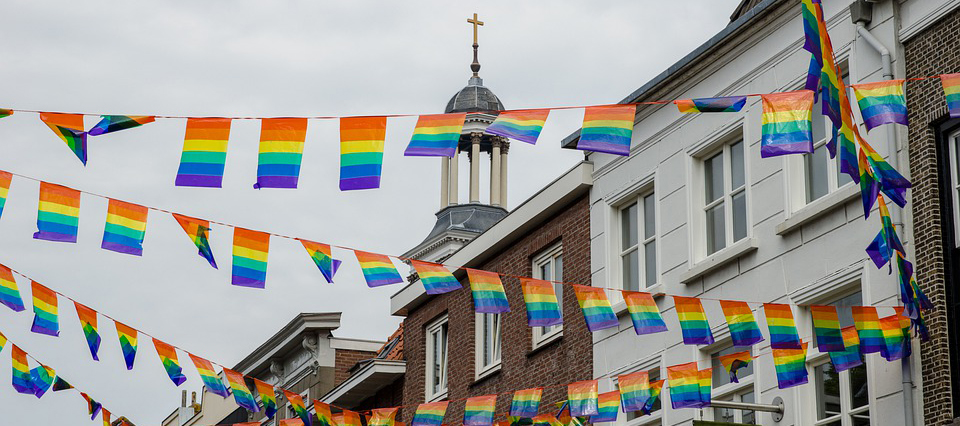50th anniversary of the first Pride parade UK.
Contents |
[edit] ‘Pride is a celebration, but first, it’s a protest’
July the first 2022 marks the 50th anniversary of the first Pride parade in London, a celebration of the triumphs of the LGBT+ community, but also a reminder that there’s a lot of work to be done.
Pride is a celebration, but above all, it’s a chance to highlight the injustices the LGBTQIA+ community faces, said Kathleen Harrison, ICE representative for the Manchester Building Equality committee.
“Pride is a celebration, but first and foremost it is a protest, a chance to highlight the injustice the LGBTQIA+ community faces and make sure that people know the community exists, in the most colourful and flamboyant way possible,” she said.
This year marks the 50th anniversary of the first Pride parade in the UK. The first march took place in London on 1 July 1972, organised by the Gay Liberation Front (GLF). The movement was influenced by the 1969 Stonewall riots in the United States, protests which sparked the fight for equality for the LGBTQ+ community.
According to Pride in London: “Participation in the parade gives the opportunity for expression of celebration, joy and triumph but also the voice to rightly express the continued fight for those injustices and inequalities that exist amongst us.”
“Having been involved in various Pride events over the last five years, I’ve seen how important it is for the community to be both seen and heard, but also to see change happen,” Harrison said.
[edit] Looking back
Scott Magee, ICE graduate member and transport planner for Arup highlighted how over the last 50 years, the UK has come far on LBGTQ+ equality in terms of legalisation, marriage equality, equal rights and conversion therapy.
“[It’s] something we should be proud of... However, the four nations [in the UK] have not always moved at the same pace and not all members of our community have been treated equally,” he said.
Magee recounted the history: “Homosexuality was legalised in England and Wales in 1967, but it was not until 1980 for my home country Scotland and 1982 in Northern Ireland.”
On 17 May 2022, it was International Day Against Homophobia, Biphobia and Transphobia. This date marks the anniversary of the WHO no longer classifying homosexuality as a disease.
But, as Magee pointed out, the same only happened for the trans and non-binary part of the LBTGQ+ community in May of 2019.
“Even the latest government proposals to ban gay conversion therapy have fallen short of also banning conversion therapy for those who are trans and non-binary,” he said.
[edit] Still a lot of work to be done
Julian Phatarfod, senior transportation planner from Arup agrees that the UK has come on “leaps and bounds in the past 50 years”.
He cites legislative milestones like the end of Section 28 and the introduction of marriage equality as well as increased visibility of an ever-diversifying LGBTQ+ community as signs of progress.
However, he highlights a lingering disparity: “We’ve recently seen very similar barriers being put up in front of our trans and non-binary community, with political and social discourse becoming increasingly discriminatory.”
"[It makes it] increasingly difficult for our friends, family and colleagues to be themselves in the workplace,” he said.
With this year’s march, Pride in London is calling on the UK government to:
- Ban conversion therapy for all LGBT+ people.
- Reform the Gender Recognition Act.
- Provide equal protection for LGBT+ communities against hate crime by making homophobic, biphobic or transphobic hate crime an aggravated crime in line with racial and religious hate crimes.
- End its hostile environment toward minority migrants.
- Establish a national AIDS memorial.
- Take a leading role in tackling the violence and discrimination against LGBT+ people worldwide.
[edit] Looking forward
Harrison said the industry is now more open and accepting in a way she didn’t think possible when she went to her first Pride march in 2017.
“Though we still have a long way to go, I hope that in 50 years’ time we’re not still having to protest about the injustice faced by LGBTQIA+ people, but that we’re continuing to celebrate the amazing culture and those who are part of the community,” she said.
Magee stressed that it’s important to have Pride every year to “stand shoulder to shoulder with all parts of the community to ensure hatred never wins.”
He pointed out that being able to be yourself in the workplace is a source of strength, not a weakness.
“I hope that we continue to fight hard for equality in the next 50 years to ensure nobody feels like they don’t belong,” he said.
Similarly, Phatarfod said: “My hope for the 50 years ahead is that we can focus on people’s capabilities and skills and not their identities, so that we can bring our whole selves to work and perform our best.”
This article appears on the ICE News site entitled "‘Pride is a celebration, but first, it’s a protest’, written by Ana Bottle, assistant digital content editor at ICE and dated June 17 2022.
--ICE
[edit] Related Articles on Designing Buildings.
Diversity, equality and opportunities in the construction industry







